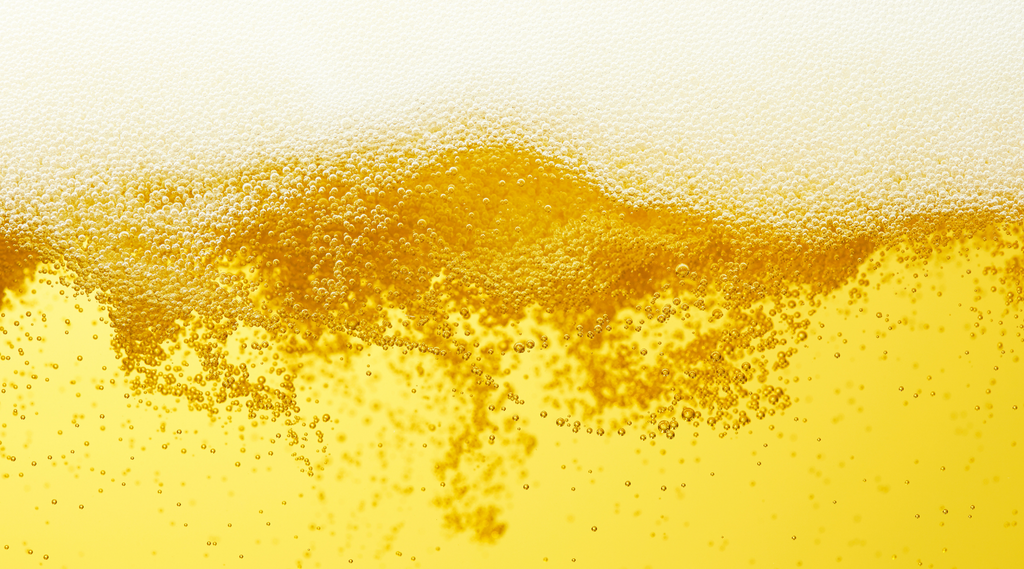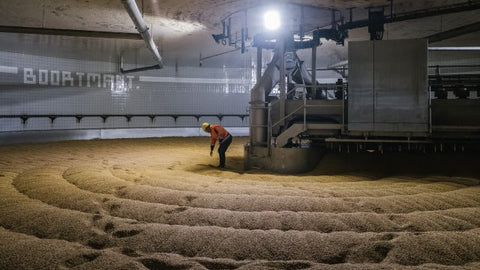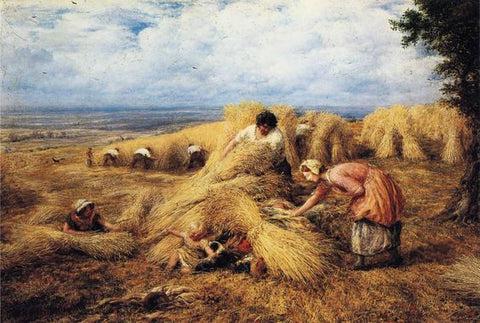
The making of beer - How exactly is beer made?
Beer is the magic drink that gives us relief from thirst and makes us slightly tipsy. And not only, but also there are so many beer flavours that make beer a suitable drink for any occasion. But have you ever wondered how this popular drink is made? What is needed to make a beer? Let’s investigate!
In this article on making beer, we will discuss:
- History of making beer
- What are the ingredients to make a beer?
- What are the main steps to making a beer?
- How do you make craft beer?
- Can you brew beer at home?
- How do you make beer with a beer brewing kit?
History of making beer
It is unclear who exactly is responsible for inventing beer, but it is one of the oldest drinks produced. Beer was probably already around when the first tribes or communities domesticated cereal. With wild yeast in the air, any cereal containing certain sugars can go through spontaneous fermentation.
The first record of beer dates back to 3500 BC and was sold in an area that we now call Iran. Beer became a vital drink in Eurasian and North African civilizations. During the middle ages, beer was one of the most common drinks in Europe. Now it is worldwide one of the most popular drinks.
The use of hops in beer became common only during the 9th century. Before that, a mix of grains was used called gruit. Brewing was mainly a domestic activity until the industrial revolution. Then the new inventions allowed brewers to have more control in the process and commercialise it.

What are the ingredients to make a beer?
- Water
Water is one of the main ingredients of beer. 95% of a beer is entirely water. The beer's quality also depends on water. Some ions in water can harm beer production, thus beer brewers are often paying attention to the water quality. Though, for homebrewing tap water is also completely fine. The mineral salts of water differ by region, which affects the beer flavour and colour.
- The Hops
As we already mentioned, hops were not there when beer was invented, but it is now an essential ingredient. Hops is a climbing plant that produces lupulus, which gives bitterness to the beer. Hops are mainly used for beer flavours and aromas, but it is also good for preserving beer. Nowadays, there are a lot of varieties of hops, so beer brewers can experiment with beer tastes.
- Malt
Malt is a grain used in beer to bring out the sugars that can turn into alcohol. Malt is also used for beer flavours and aromas. The most common malt used is barley malt. Brewers also use wheat and rye malt. It depends on the beer style.
- Yeast
Yeast has huge importance in making beer as they allow alcoholic fermentation. Similarly to malt and hops, yeast also contributes to beer flavour and aroma.

What are the main steps to making a beer?
- Malting
You need to go through the malting process to make malt. The grain cannot be used in brewing as it is, so the malting process will germinate and then again degerminate the grain to become malt. Brewers often buy ready-made malt from maltsters, so they do not need to do it themselves.
- Brewing
This is where the beer brewing process starts. Once you have the malt, you can crush it and then hydrate it with water, which is called mashing. When ready, this mixture is put to boil. There are three techniques to do that. The first one is the bottom fermentation when the temperature is increased gradually. The second technique is steeping. Part of the brew is brought to a boil before adding it to the mash. Lastly, there is the simple infusion technique where water is heated and then added to the mash. Bittering hops can be added during the early stages of brewing to impart bitterness.
- Fermentation
Fermentation is one of the most important steps, where beer becomes beer as we know it. In this step, yeast is added to produce alcohol. The yeasts multiply and feed on the sugars and then release alcohol. There are different methods of fermentation. The bottom fermentation is when lower temperatures are used, and the yeast sinks to the bottom of the tank. The top fermentation is the opposite, using higher temperatures, and the yeast stays at the surface. Spontaneous fermentation is when only the yeast in the air is used in a suitable place in Senne Valley in Belgium. Sometimes a mixed fermentation method is used, which requires a combination of yeasts.
- Maturation
The beer is kept in storage where the yeast continues to do its work. During this stage, aromatic hops can be used to add aroma to the beer.
- Bottling and storing
Finally, when the beer is ready, we can put it in bottles and keep it away from any contact with oxygen. The best is to store it in cool temperatures. Some brewers also use refermentation. This is when yeast or sugar is added to the beer before bottling, and then the bottles are kept in warm temperatures for several weeks. This method gives the beer more complex tastes and aromas.

How do you make craft beer?
Brewing craft beer is following the same main steps as brewing any beer. The main difference between beer and craft beer is that commercial beer is mass-produced. Commercial beer also does not pay attention to the quality and taste as much. For mass-produced beer, lower production costs and profit are the most important. Craft beer brewers have a different mentality. When making craft beer, the focus is on taste and quality and not on the cost of making beer. Craft beer brewers are also more experimental and innovative with their creations.
Can you brew beer at home?
Of course! Many people brew beer as a hobby. With all sorts of brewing equipment available, beer brewing is made accessible to everyone.
How do you make beer with a beer brewing kit?
Beer brewing kits are there to help you brew your beer. Various beer brewing kits are available for brewers with different experiences. You can find brewing kits for beginners, advanced brewers, or even microbrewers. A beer brewing kit has the ingredients and equipment. You only need to follow the instructions and recipe, which is made pretty simple. What is left for you to do is dilute the concentration, fermentation and bottling.
So, are you ready to make beer?



Leave a comment